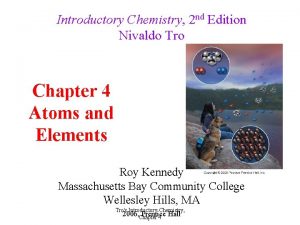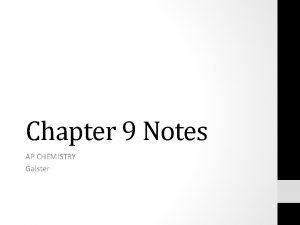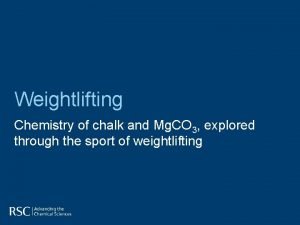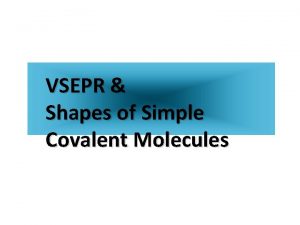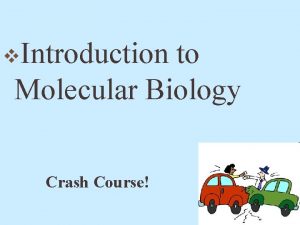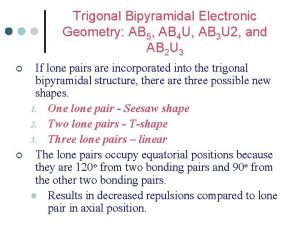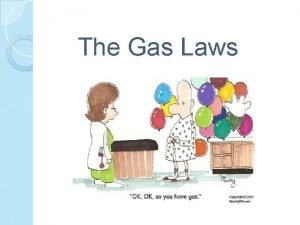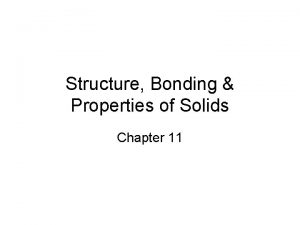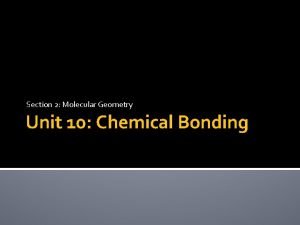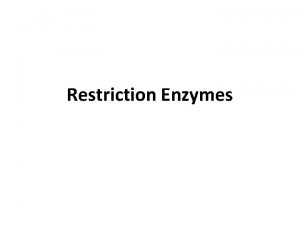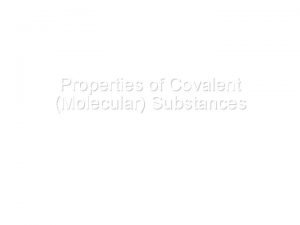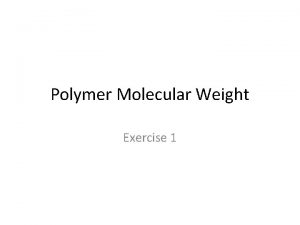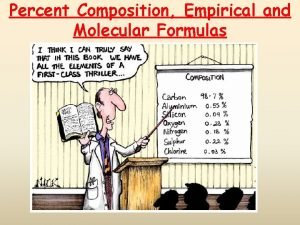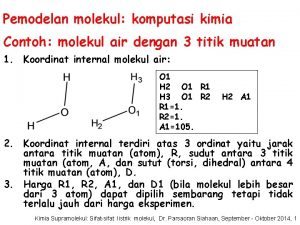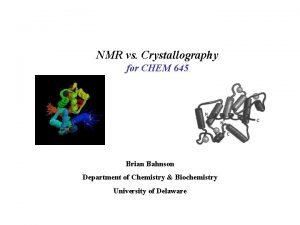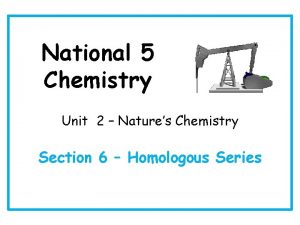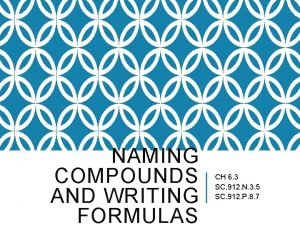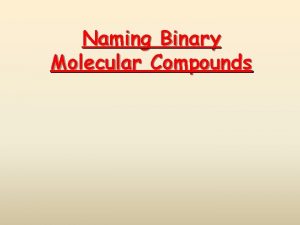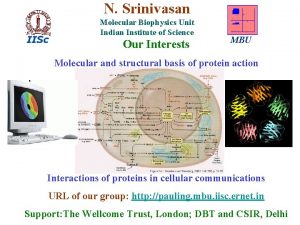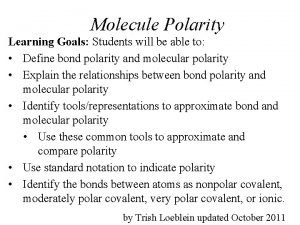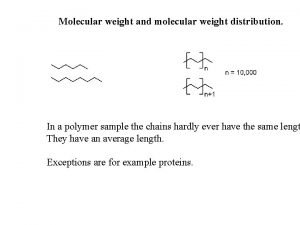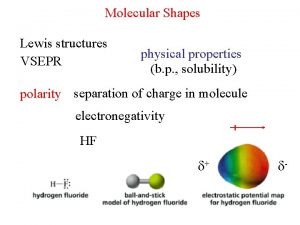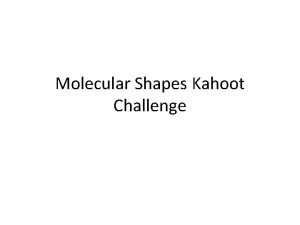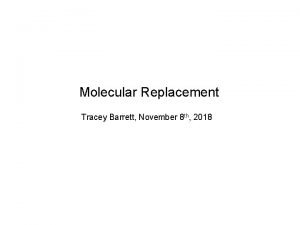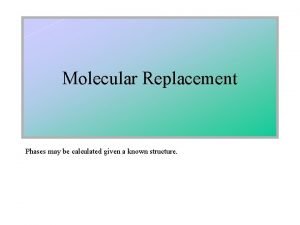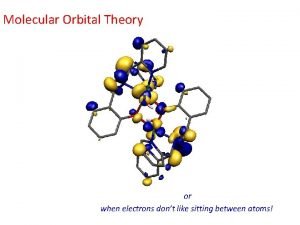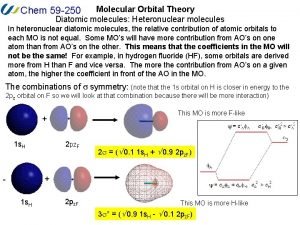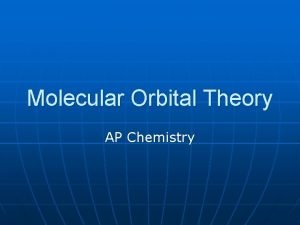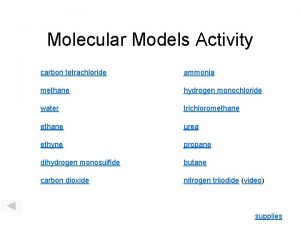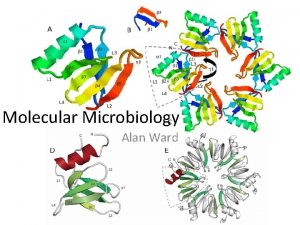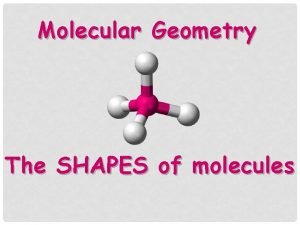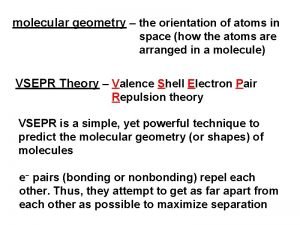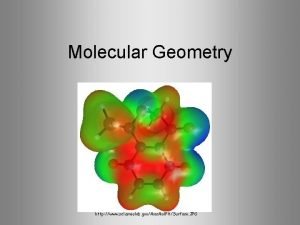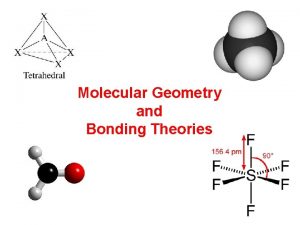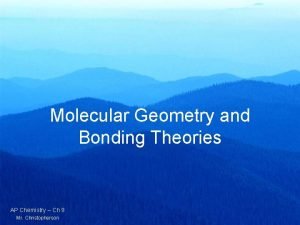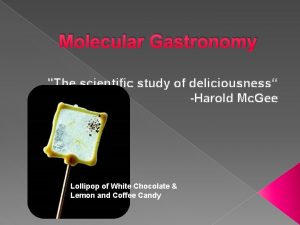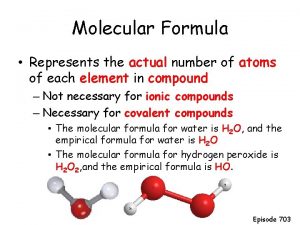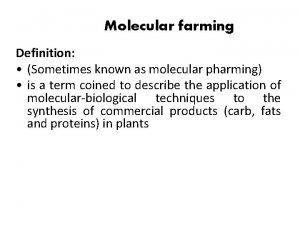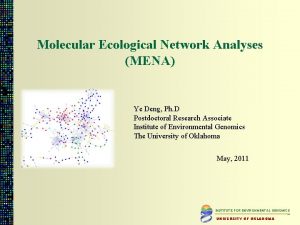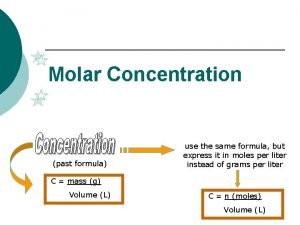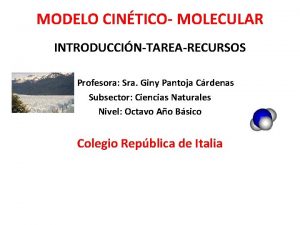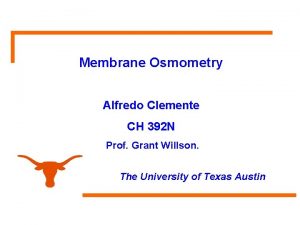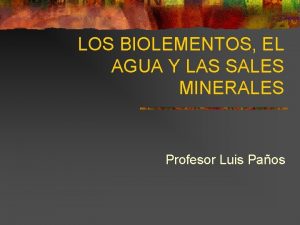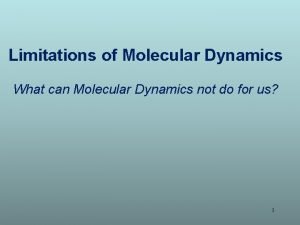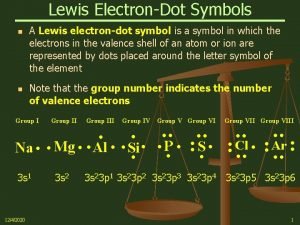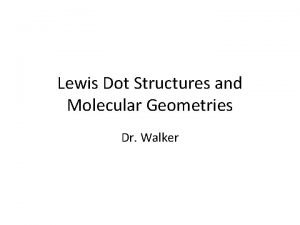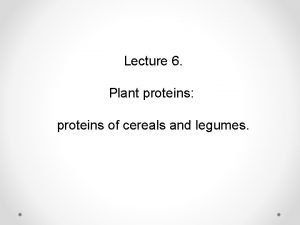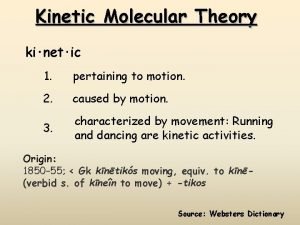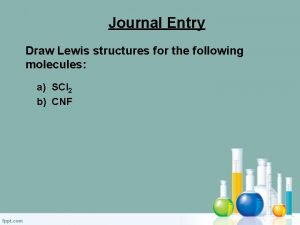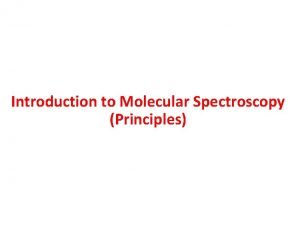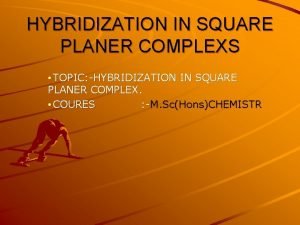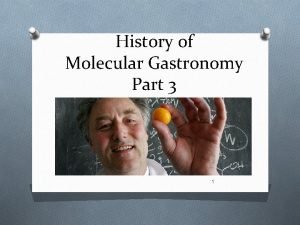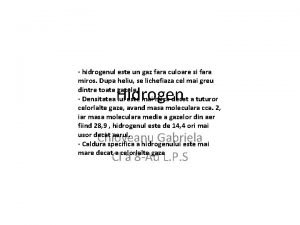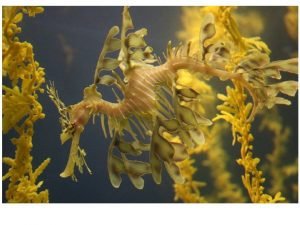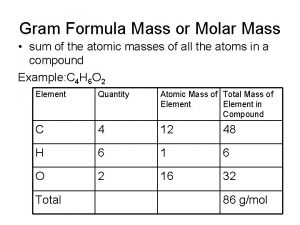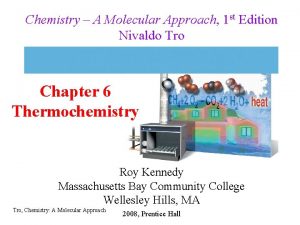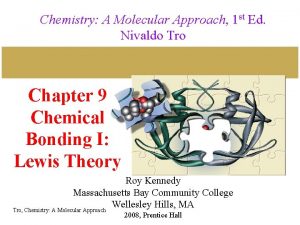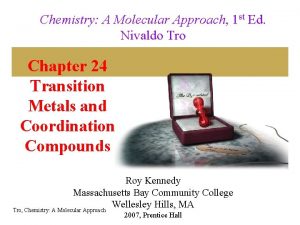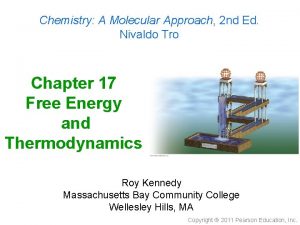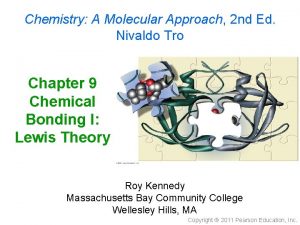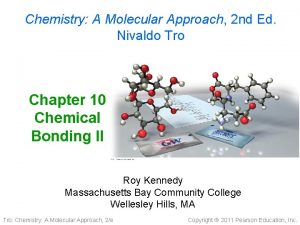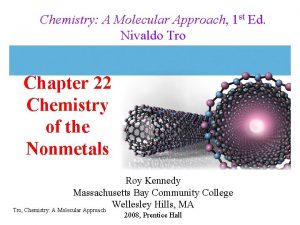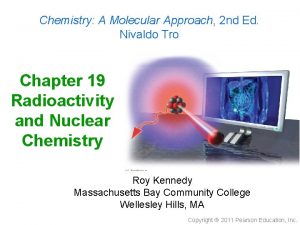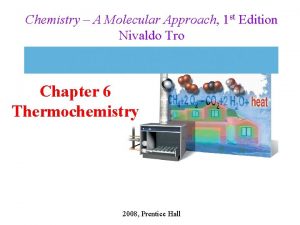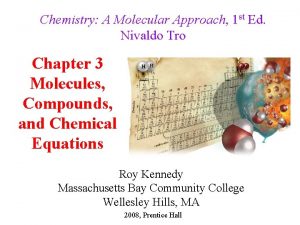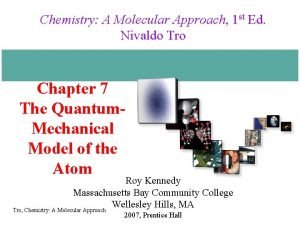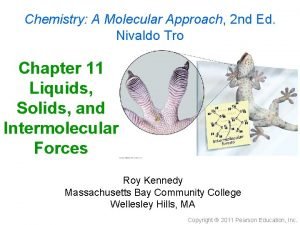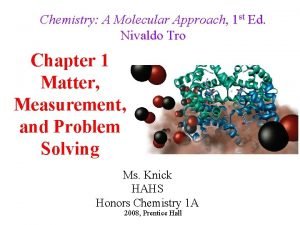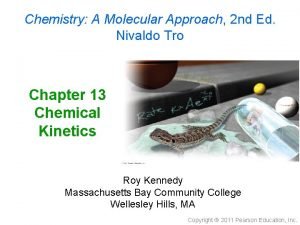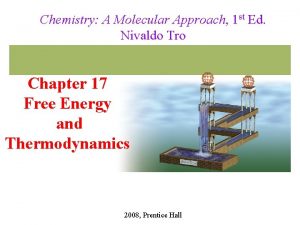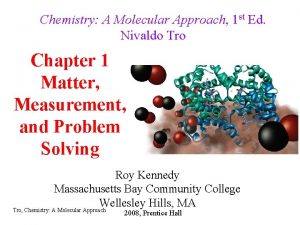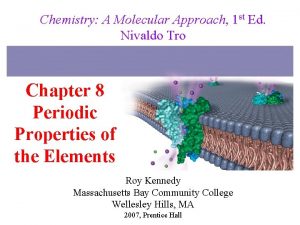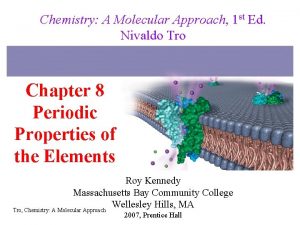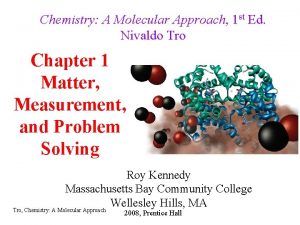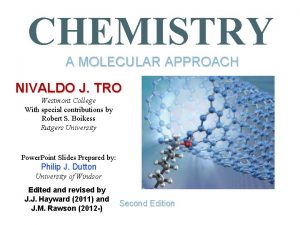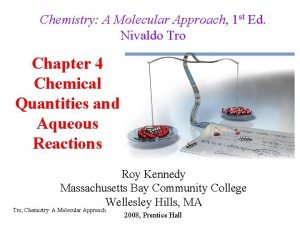Chemistry A Molecular Approach 1 st Ed Nivaldo





























































































- Slides: 93

Chemistry: A Molecular Approach, 1 st Ed. Nivaldo Tro Chapter 1 Matter, Measurement, and Problem Solving Roy Kennedy Massachusetts Bay Community College Wellesley Hills, MA 2008, Prentice Hall

a test of a hypothesis or theory Scientific Method the careful noting and recording of natural phenomena a tentative explanation of a single or small number of natural phenomena a general explanation of natural phenomena a generally observed natural phenomenon

Limitations to the Scientific Method • The scientific method is limited üby what can be observed with the five senses üto the present ühow, not why a process works üin that it cannot make moral judgments ücannot deal with the unique

Chemistry • Chemistry is the science that seeks to understand the • behavior of matter by studying the behavior of atoms and molecules atoms ü are submicroscopic particles ü are the fundamental building blocks of all matter • molecules ü two or more atoms attached together Ø attachments are called bonds Ø attachments come in different strengths ü molecules come in different shapes and patterns

Structure Determines Properties • the properties of matter are determined by the atoms and molecules that compose it 1. 2. 3. 4. carbon monoxide composed of one carbon atom and one oxygen atom colorless, odorless gas burns with a blue flame binds to hemoglobin 1. 2. 3. 4. carbon dioxide composed of one carbon atom and two oxygen atoms colorless, odorless gas incombustible does not bind to hemoglobin

Classification of Matter • matter is anything that has mass and occupies • space we can classify matter based on whether it’s solid, liquid, or gas

Solids • the particles in a solid are packed close together and are fixed in position ü though they may vibrate • the close packing of the particles results • in solids being incompressible the inability of the particles to move around results in solids retaining their shape and volume when placed in a new container, and prevents the particles from flowing

Crystalline Solids • some solids have their particles arranged in an orderly geometric pattern – we call these crystalline solids üsalt and diamonds

Amorphous Solids • some solids have their particles randomly distributed without any long -range pattern – we call these amorphous solids üplastic üglass ücharcoal

Liquids • the particles in a liquid are closely • • packed, have some ability to move around incompressible take the shape of their container and to flow don’t have enough freedom to escape or expand to fill the container

Gases • particles do not interact • • with each other the particles are constantly moving, bumping into each other and the container there is a lot of empty space between the particles

Gases • compressible • expand to fill and take the • shape of their container will flow

Classification of Matter by Composition 1) made of one type of particle 2) all samples show the same intensive (independent of amount) properties 1) made of multiple types of particles 2) samples may show different intensive properties

Classification of Pure Substances 1) made of one type of atom (some elements found as multiatom molecules in nature) 2) combine together to make compounds 1) made of one type of molecule, or array of ions 2) molecules contain 2 or more different kinds of atoms

Classification of Mixtures 1) made of multiple substances, whose presence can be seen 2) portions of a sample have different composition and properties 1) made of multiple substances, but appears to be one substance 2) all portions of a sample have the same composition and properties

Separation of Mixtures • separate mixtures based on different physical properties of the components Different Physical Property Technique Boiling Point Distillation State of Matter (solid/liquid/gas) Filtration/Decanting Adherence to a Surface Chromatography Volatility Evaporation Density Centrifugation & Decanting

Distillation

Filtration

Chromatography Separation based upon adherence to a surface. • Stationary phase • Moving phase

Evaporation Liquid vaporizes leaving less volatile liquid or solid.

Centrifugation Separation based density. • Centrifugal motion causes more dense materials to go to the bottom of the tube

Decanting Separation based state • Carefully pour liquid leaving precipitate Separation based density. • Carefully pour less dense liquid

Properties of Matter • physical properties are the characteristics of matter that can be changed without changing its composition ücharacteristics that are directly observable • chemical properties are the characteristics that determine how the composition of matter changes as a result of contact with other matter or the influence of energy ücharacteristics that describe the behavior of matter

Physical Changes in Matter The boiling of water is a physical change. The water molecules are separated from each other, but their structure and composition do not change.

Common Physical Changes • processes that cause • changes in the matter that do not change its composition state changes Dissolving Subliming of Sugar Dry Ice C 12 H 22 O 11(s) Dry Ice üboiling / condensing ümelting / freezing üsubliming • dissolving CO 2(g) CO 2(s) C 12 H 22 O 11(aq)

Chemical Changes in Matter The rusting of iron is a chemical change. The iron atoms in the nail combine with oxygen atoms from O 2 in the air to make a new substance, rust, with a different composition.

Common Chemical Changes • processes that cause • • • changes in the matter that change its composition rusting processes that release lots of energy burning C 3 H 8(g) + 5 O 2(g) → 3 CO 2(g) + 4 H 2 O(l)

Energy Changes in Matter • changes in matter, both physical and chemical, result • • in the matter either gaining or releasing energy is the capacity to do work is the action of a force applied across a distance ü a force is a push or a pull on an object ü electrostatic force is the push or pull on objects that have an electrical charge

Energy of Matter - Kinetic • kinetic energy is energy of motion ümotion of the atoms, molecules, and subatomic particles üthermal (heat) energy is a form of kinetic energy because it is caused by molecular motion

Energy of Matter - Potential • potential energy is energy that is stored in the matter üdue to the composition of the matter and its position in the universe üchemical potential energy arises from electrostatic forces between atoms, molecules, and subatomic particles

Conversion of Energy • you can interconvert kinetic energy and • potential energy whatever process you do that converts energy from one type or form to another, the total amount of energy remains the same üLaw of Conservation of Energy

Potential to Kinetic Energy

Spontaneous Processes • materials that possess high potential • energy are less stable processes in nature tend to occur on their own when the result is material(s) with lower total potential energy ü processes that result in materials with higher total potential energy can occur, but generally will not happen without input of energy from an outside source • when a process results in materials with less potential energy at the end than there was at the beginning, the difference in energy is released into the environment

The Standard Units • Scientists have agreed on a set of international standard units for comparing all our measurements called the SI units üSystème International = International System Quantity length mass time temperature Unit meter kilogram second kelvin Symbol m kg s K

• SI unit = meter Length üAbout a yard • Commonly use centimeters (cm) ü 1 m = 100 cm ü 1 cm = 0. 01 m = 10 mm ü 1 inch = 2. 54 cm (exactly)

Mass • Measure of the amount of matter present in an object ü weight measures the gravitational pull on an object, which depends on its mass • SI unit = kilogram (kg) ü about 2 lbs. 3 oz. • Commonly measure mass in grams (g) or milligrams (mg) ü 1 kg = 2. 2046 pounds, 1 lbs. = 453. 59 g ü 1 kg = 1000 g = 103 g ü 1 g = 1000 mg = 103 mg ü 1 g = 0. 001 kg = 10 -3 kg ü 1 mg = 0. 001 g = 10 -3 g

Time • measure of the duration of an event • SI units = second (s)

Temperature Scales • Fahrenheit Scale, °F ü used in the U. S. • Celsius Scale, °C ü used in all other countries • Kelvin Scale, K ü The SI unit for temperature

Prefix Multipliers in the SI System Prefix Symbol Decimal Equivalent Power of 10 mega- M 1, 000 Base x 106 kilo- k 1, 000 Base x 103 deci- d 0. 1 Base x 10 -1 centi- c 0. 01 Base x 10 -2 milli- m 0. 001 Base x 10 -3 micro- m or mc 0. 000 001 Base x 10 -6 nano- n 0. 000 001 Base x 10 -9 pico p 0. 000 000 001 Base x 10 -12

• Derived unit Volume ü any length unit cubed • Measure of the amount of space occupied • SI unit = cubic meter (m 3) • Commonly measure solid volume in cubic centimeters (cm 3) ü 1 m 3 = 106 cm 3 ü 1 cm 3 = 10 -6 m 3 = 0. 000001 m 3 • Commonly measure liquid or gas volume in milliliters (m. L) ü 1 L is slightly larger than 1 quart ü 1 L = 1 dm 3 = 1000 m. L = 103 m. L ü 1 m. L = 0. 001 L = 10 -3 L ü 1 m. L = 1 cm 3

Mass & Volume • mass and volume are extensive properties üthe value depends on the quantity of matter üextensive properties cannot be used to identify what type of matter something is Øif you are given a large glass containing 100 g of a clear, colorless liquid and a small glass containing 25 g of a clear, colorless liquid - are both liquids the same stuff?

Mass vs. Volume of Brass

What Is a Measurement? • quantitative observation • every measurement has a • number and a unit every digit written is certain, except the last one which is estimated


Estimation in Weighing • What is the uncertainty in this reading?

Uncertainty in Measured Numbers uncertainty comes from: • limitations of the instruments used for comparison, • the experimental design, • the experimenter, • nature’s random behavior

Precision and Accuracy • accuracy is an indication of how close a • measurement comes to the actual value of the quantity precision is an indication of how reproducible a measurement is

Accuracy vs. Precision

Precision • imprecision in measurements is caused by random errors üerrors that result from random fluctuations üno specific cause, therefore cannot be corrected • we determine the precision of a set of • measurements by evaluating how far they are from the actual value and each other even though every measurement has some random error, with enough measurements these errors should average out

Accuracy • inaccuracy in measurement caused by systematic errors üerrors caused by limitations in the instruments or techniques or experimental design ücan be reduced by using more accurate instruments, or better technique or experimental design • we determine the accuracy of a measurement by • evaluating how far it is from the actual value systematic errors do not average out with repeated measurements because they consistently cause the measurement to be either too high or too low

Significant Figures • the non-place-holding digits in • a reported measurement are called significant figures tell us the range of values to expect for repeated measurements 12. 3 cm has 3 sig. figs. and its range is 12. 2 to 12. 4 cm 12. 30 cm has 4 sig. figs. and its range is 12. 29 to 12. 31 cm

Counting Significant Figures 1) All non-zero digits are significant ü 1. 5 has 2 sig. figs. 2) Interior zeros are significant ü 1. 05 has 3 sig. figs. 3) Leading zeros are NOT significant ü 0. 001050 has 4 sig. figs. Ø 1. 050 x 10 -3

Counting Significant Figures 4) Trailing zeros may or may not be significant 1) Trailing zeros after a decimal point are significant Ø 1. 050 has 4 sig. figs. 2) Zeros at the end of a number without a written decimal point are ambiguous and should be avoided by using scientific notation Ø if 150 has 2 sig. figs. then 1. 5 x 102 Ø but if 150 has 3 sig. figs. then 1. 50 x 102

Example 1. 5 Determining the Number of Significant Figures in a Number How many significant figures are in each of the following? 0. 04450 m 4 sig. figs. ; the digits 4 and 5, and the trailing 0 5. 0003 km 5 sig. figs. ; the digits 5 and 3, and the interior 0’s 1. 000 × 105 s 4 sig. figs. ; the digit 1, and the trailing 0’s 0. 00002 mm 1 sig. figs. ; the digit 2, not the leading 0’s 10, 000 m Ambiguous, generally assume 1 sig. fig.

Multiplication and Division with Significant Figures • when multiplying or dividing measurements with significant figures, the result has the same number of significant figures as the measurement with the fewest number of significant figures 5. 02 × 89, 665 × 0. 10 = 45. 0118 = 45 3 sig. figs. 5. 892 4 sig. figs. 5 sig. figs. ÷ 2 sig. figs. 6. 10 = 0. 96590 = 0. 966 3 sig. figs.

Addition and Subtraction with Significant Figures • when adding or subtracting measurements with significant figures, the result has the same number of sig figs as the measurement with the fewest number of sig figs 5. 74 + 0. 823 + 2. 651 = 9. 214 = 9. 21 3 sf. 4. 8 2 sf 3 sf. 3. 965 = 4 sf. 4 sf. 0. 835 = 3 sf 0. 84 2 sf

Rounding if the number after the place of the last significant figure is: 0 to 4, round down ü drop all digits after the last sig. fig. and leave the last sig. fig. alone ü add insignificant zeros to keep the value if necessary 5 to 9, round up ü drop all digits after the last sig. fig. and increase the last sig. fig. by one ü add insignificant zeros to keep the value if necessary to avoid accumulating extra error from rounding, round only at the end, keeping track of the last sig. for intermediate calculations

Rounding rounding to 2 significant figures • 2. 34 rounds to 2. 3 • 2. 37 rounds to 2. 4 • 2. 349865 rounds to 2. 3

Rounding rounding to 2 significant figures • 0. 0234 rounds to 0. 023 • 0. 0237 rounds to 0. 024 • 0. 02349865 rounds to 0. 023

Rounding rounding to 2 significant figures • 234 rounds to 230 or 2. 3 × 102 • 237 rounds to 240 or 2. 4 × 102 • 234. 9865 rounds to 230 or 2. 3 × 102

Both Multiplication/Division and Addition/Subtraction with Significant Figures • do whatever is in parentheses first, • evaluate the significant figures in the • intermediate answer, then do the remaining steps 3. 489 × (5. 67 – 2. 3) = 3 sf 2 dp 3. 489 × 3. 37 = 12 4 sf 3 sf 2 sf

Example 1. 6 Perform the following calculations to the correct number of significant figures b)

Example 1. 6 Perform the following calculations to the correct number of significant figures b)

Density • Ratio of mass: volume üSolids = g/cm 3 Ø 1 cm 3 = 1 m. L üLiquids = g/m. L üGases = g/L • Volume of a solid can be determined by water displacement – Archimedes Principle

Density • Density : solids > liquids >>> gases ü except ice is less dense than liquid water! • Heating an object generally causes it to expand, therefore the density changes with temperature

Density • Iron has a density of 7. 86 g/cm 3. Could a block of metal with a mass of 18. 2 g and a volume of 2. 56 cm 3 be iron?

Density • What volume would a 0. 871 g sample of air occupy if the density of air is 1. 29 g/L?

Problems • Convert 83 cm into meters. ü 0. 83 m • Which is longer amount of time 1351 ps or 1. 2 ns? ü 1351 ps is longer than 1. 2 ns.

Units • Always write every number with its • associated unit Always include units in your calculations üyou can do the same kind of operations on units as you can with numbers Øcm × cm = cm 2 Øcm + cm = cm Øcm ÷ cm = 1 üusing units as a guide to problem solving is called dimensional analysis

Problem Solving and Conversion Factors • Conversion factors are relationships between two units ü May be exact or measured • Conversion factors generated from equivalence statements ü e. g. , 1 inch = 2. 54 cm can give or METRIC TO ENGLISH CONVERSION ON PAGE 936 IN YOUR TEXT BOOK

Dimensional Analysis • Using units as a guide to problem solving is • called dimensional analysis This is the technique that we have learned to convert between two different units.

Problem Solving and Dimensional Analysis • Arrange conversion factors so given unit cancels üArrange conversion factor so given unit is on the bottom of the conversion factor • May string conversion factors üSo we do not need to know every relationship, as long as we can find something else the given and desired units are related to

Practice – Convert 154. 4 lbs to kg (1 kg = 2. 20 lbs)

Practice – Convert 30. 0 m. L to quarts (1 L = 1. 057 qt)

Practice 1. 9 How many cubic centimeters are there in 2. 11 yd 3?

Practice 1. 9 Convert 2. 11 yd 3 to cubic centimeters • • Sort information Strategize Given: Find: Concept Plan: Relationships: • • • Follow the concept plan to solve the problem Sig. figs. and round Check 2. 11 yd 3 volume, cm 3 yd 3 in 3 cm 3 1 yd = 36 in 1 in = 2. 54 cm Solution: Round: 1613210. 75 cm 3 = 1. 61 x 106 cm 3 Check: Units & magnitude are correct

Impossible Conversions • Is it possible to find how many seconds in a • kilogram? In order to do unit conversions they must be able to correspond to the same quantity. üFor example, kilograms and pounds are both units of mass.

Graphing in Science • All graphing that is done in science must include the following: 1. A descriptive title 2. X and Y axis labeled with units. 3. The X – axis is the manipulated variable and the Y- axis is the responding variable. 4. A trend line (or line of best fit) to show the trend in the data that has been plotted.

Volume vs. Mass of Brass 160 140 120 Mass, g 100 80 60 40 20 0 0. 0 2. 0 4. 0 6. 0 8. 0 10. 0 Volume, cm 3 12. 0 14. 0 16. 0 18. 0

Concept Plans and Conversion Factors • Convert inches into centimeters 1) Find relationship equivalence: 1 in = 2. 54 cm 2) Write concept plan in cm 3) Change equivalence into conversion factors with starting units on the bottom

Example 1. 7 Convert 1. 76 yd. to centimeters • • Sort information Strategize Given: Find: Concept Plan: Relationships: • • • Follow the concept plan to solve the problem Sig. figs. and round Check 1. 76 yd length, cm yd m cm 1 yd = 1. 094 m 1 m = 100 cm Solution: Round: 160. 8775 cm = 161 cm Check: Units & magnitude are correct

Convert 30. 0 m. L to quarts • • Sort information Strategize Given: Find: Concept Plan: Relationships: • • • Follow the concept plan to solve the problem Sig. figs. and round Check 30. 0 m. L volume, qts m. L L qt 1 L = 1. 057 qt 1 L = 1000 m. L Solution: Round: Check: 0. 03171 qt = 0. 0317 qt Units & magnitude are correct

Convert 30. 0 m. L to quarts • • • Sort information Strategize Follow the concept plan to solve the problem Sig. figs. and round Check Given: Find: Concept Plan: 154. 4 lbs Lbs to kg Relationships: 1 L = 1. 057 qt 1 L = 1000 m. L Solution: Round: Check: 0. 03171 qt = 0. 0317 qt Units & magnitude are correct

Concept Plans for Units Raised to Powers • Convert cubic inches into cubic centimeters 1) Find relationship equivalence: 1 in = 2. 54 cm 2) Write concept plan in 3 cm 3 3) Change equivalence into conversion factors with given unit on the bottom

Order of Magnitude Estimations • using scientific notation • focus on the exponent on 10 • if the decimal part of the number is less than 5, • • just drop it if the decimal part of the number is greater than 5, increase the exponent on 10 by 1 multiply by adding exponents, divide by subtracting exponents

Estimate the Answer • Suppose you count 1. 2 x 105 atoms per second for a year. How many would you count? 1 s = 1. 2 x 105 atoms 1 minute = 6 x 101 102 s 1 hour = 6 x 101 102 min 1 day = 24 101 hr 1 yr = 365 102 days

Density as a Conversion Factor • can use density as a conversion factor between mass and volume!! ü density of H 2 O = 1. 0 g/m. L 1. 0 g H 2 O = 1 m. L H 2 O ü density of Pb = 11. 3 g/cm 3 11. 3 g Pb = 1 cm 3 Pb How much does 4. 0 cm 3 of lead weigh? 4. 0 cm 3 Pb x 11. 3 g Pb 1 cm 3 Pb = 45 g Pb

Example 1. 3 Decide if a ring with a mass of 3. 15 g that displaces 0. 233 cm 3 of water is platinum • Find the equation that relates the given quantity to the quantity you want to find Given: mass = 3. 15 g volume = 0. 233 cm 3 Find: density, g/cm 3 Equation: • • Since the equation is solved for the quantity you want to find, and the units are correct, substitute and compute Compare to accepted value of the intensive property Density of platinum = 21. 4 g/cm 3 therefore not platinum

Practice - Dimensional Analysis Your car's gas tank holds 18. 6 gallons and is one quarter full. Your car gets 16 miles/gal. You see a sign saying, "Next gas 73 miles. " Your often-wrong brother, who is driving, is sure you'll make it without running out of gas. You're not so sure and do some quick figuring: "Ah! I knew I was right, " declares your brother on glancing at your calculator, "your calculations prove it!" Is this a good time to be assertive and demand that he turn around to get gas, or do you conclude that your brother is right for once?

Practice - Dimensional Analysis You have come down with a bad case of the geebies, but fortunately your grandmother knows how to cure the geebies. She sends you an eyedropper bottle labeled: “Take 1 drop per 10 lbs. of body weight per day divided into 4 doses until the geebies are gone. ” If you weight 150 pounds, how many drops do you take?

Practice - Dimensional Analysis You are traveling to Ensenada for the weekend. You know that Mexico has abundant gas supply, so you think that it might be to your advantage to get gas in Tijuana before returning to the United States. The average cost for a liter of gasoline in Tijuana is 5. 8 pesos, and the current exchange rate is 11 cents to the peso. What is the cost of a gallon of gas in Tijuana in US dollars?

Fahrenheit vs. Celsius • a Celsius degree is 1. 8 times larger than a • Fahrenheit degree the standard used for 0° on the Fahrenheit scale is a lower temperature than the standard used for 0° on the Celsius scale

Kelvin vs. Celsius • the size of a “degree” on the Kelvin scale is the same as on the Celsius scale üthough technically, we don’t call the divisions on the Kelvin scale degrees; we called them kelvins! üso 1 kelvin is 1. 8 times larger than 1°F • the 0 standard on the Kelvin scale is a much lower temperature than on the Celsius scale
 Introductory chemistry 5th edition nivaldo j. tro
Introductory chemistry 5th edition nivaldo j. tro Introductory chemistry 5th edition answers
Introductory chemistry 5th edition answers Nivaldo j. tro introductory chemistry
Nivaldo j. tro introductory chemistry Democritus atomic model diagram
Democritus atomic model diagram Giant molecular structure vs simple molecular structure
Giant molecular structure vs simple molecular structure Giant molecular structure vs simple molecular structure
Giant molecular structure vs simple molecular structure Zinc oxide + nitric acid → zinc nitrate + water
Zinc oxide + nitric acid → zinc nitrate + water Ap chemistry molecular geometry
Ap chemistry molecular geometry Ib organic chemistry
Ib organic chemistry Inorganic chemistry vs organic chemistry
Inorganic chemistry vs organic chemistry Approach chemistry chalk chapter
Approach chemistry chalk chapter Datagram networks and virtual circuit networks
Datagram networks and virtual circuit networks Theoretical models of counseling
Theoretical models of counseling International market selection model
International market selection model Multi approach avoidance conflict
Multi approach avoidance conflict Cognitive approach vs behavioral approach
Cognitive approach vs behavioral approach Definition of research approach
Definition of research approach Traditional approach in system analysis and design
Traditional approach in system analysis and design Tony wagner's seven survival skills
Tony wagner's seven survival skills Vsepr theory assignment
Vsepr theory assignment The shape of ab3e molecule
The shape of ab3e molecule Molecular geometry of pf3
Molecular geometry of pf3 Crash course molecular biology
Crash course molecular biology Molecular level vs cellular level
Molecular level vs cellular level Aniline uv spectrum
Aniline uv spectrum Sf5cl lewis structure
Sf5cl lewis structure Kinetic molecular theory
Kinetic molecular theory Covalent molecular and covalent network
Covalent molecular and covalent network Kinetic molecular theory of liquids and solids
Kinetic molecular theory of liquids and solids Chemical formula vs molecular formula
Chemical formula vs molecular formula Criterios de amsterdam cancer de colon
Criterios de amsterdam cancer de colon Molecular geometry chart
Molecular geometry chart Palindromic sequence
Palindromic sequence Molecular rebar
Molecular rebar Covalent molecular substances
Covalent molecular substances Empirical formula of haemoglobin
Empirical formula of haemoglobin Number molecular weight
Number molecular weight Dicots
Dicots Empirical formula to percent composition
Empirical formula to percent composition How to find molecular formula
How to find molecular formula Percentage of composition
Percentage of composition How to find molecular formula
How to find molecular formula Molecular modelling laboratory
Molecular modelling laboratory Molecular replacement method
Molecular replacement method Explain homologous series with example
Explain homologous series with example Naming and writing formulas for molecular compounds
Naming and writing formulas for molecular compounds Carbon pentoxide
Carbon pentoxide N srinivasan iisc
N srinivasan iisc Relationship between bond dipoles and molecular dipoles
Relationship between bond dipoles and molecular dipoles Number-average molecular weight
Number-average molecular weight Ch2o lewis structure molecular geometry
Ch2o lewis structure molecular geometry Kahoot shapes
Kahoot shapes Molecular shape finder
Molecular shape finder Molecular replacement method
Molecular replacement method Molecular replacement method
Molecular replacement method Px py pz orbitals
Px py pz orbitals Heteronuclear diatomic molecules molecular orbital theory
Heteronuclear diatomic molecules molecular orbital theory Li2 molecular orbital diagram
Li2 molecular orbital diagram Simona soverini
Simona soverini What is an unshared pair of electrons
What is an unshared pair of electrons Molecular microbiology definition
Molecular microbiology definition Molecular and electron geometry chart
Molecular and electron geometry chart Bent polar or nonpolar
Bent polar or nonpolar Pf3 molecular geometry
Pf3 molecular geometry Molecular geometry of no3-
Molecular geometry of no3- Molecular geometry and bonding theories
Molecular geometry and bonding theories What is a bond order in chemistry
What is a bond order in chemistry Molecular gastronomy restaurants
Molecular gastronomy restaurants Empirical formula
Empirical formula Molecular pharming definition
Molecular pharming definition Concln
Concln Convert grams to moles
Convert grams to moles Concentration formula
Concentration formula Cintico
Cintico Osometer
Osometer Funciones de las sales minerales
Funciones de las sales minerales Molecular dynamics limitations
Molecular dynamics limitations Hno2 lewis structure molecular geometry
Hno2 lewis structure molecular geometry I3- point group
I3- point group Lentils examples
Lentils examples Kinetic molecular model of gases
Kinetic molecular model of gases Molecular theory of gases and liquids
Molecular theory of gases and liquids Kinetic molecular theory volume
Kinetic molecular theory volume Nocl vsepr shape
Nocl vsepr shape Applications of uv spectroscopy
Applications of uv spectroscopy Molecular replacement method
Molecular replacement method Covalent network solid vs molecular solid
Covalent network solid vs molecular solid Bio molecular systems ltd
Bio molecular systems ltd Square planar hybridization
Square planar hybridization Section 14-3 human molecular genetics answers
Section 14-3 human molecular genetics answers History of molecular gastronomy
History of molecular gastronomy Hidrogenul molecular
Hidrogenul molecular Convergent evolution definition
Convergent evolution definition Formula mass vs molecular mass
Formula mass vs molecular mass


